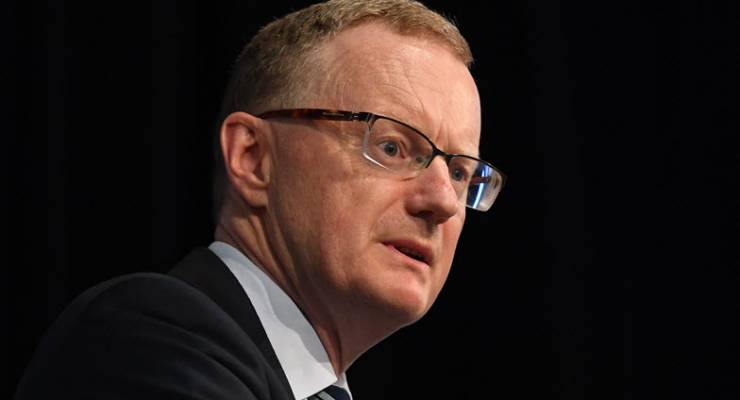
While the “rate rise looms” crowd abandoned predictions of a Cup day interest rate rise a while back — pushing into 2018 the eagerly awaited tightening of monetary policy — this afternoon’s Reserve Bank decision to keep rates on hold will be carefully parsed for the Bank’s view of the economy — and how far into 2018 we might have to wait for a rate rise, assuming we get one.
Some historical context: the RBA cash rate has been below 2% now for 18 months, and below 3% since Julia Gillard was prime minister. There hasn’t been a rate rise since 2010. At no point in that time have we had either the economic growth or the inflation to warrant a lift in rates, despite successive governments pumping tens of billions of dollars a year of deficit spending into the economy.
The strong employment growth that has marked 2017, however, had monetary hawks salivating at the prospect of rate rises. But that was until a recent set of economic news knocked the confidence out of them: weaker than expected September quarter inflation, and successive weak retail sales figures for the three months to September. In fact retail sales are only up 2.2% since the last rate cut in August 2016. The markets had been looking for a 0.4% rise (seasonally adjusted) in September — but last Friday the ABS revealed, instead, no growth at all — 0%. And once the changes to the way the Consumer Price Index is worked out (that we told you about last month) kick in, inflation is set to fall further. Economists reckon the changes would have cut the CPI for the year to June from the already weak 1.8% to 1.6%.
Bond yields, usually seized on by gurus of the hard money gang as a true indicator of market belief, have fallen by more than 20 basis points in the past month to 2.66% last week — and they are now 32 points under the peak this year of 2.98%, in March when there was a lot more confidence about sustained growth and inflation both in Australia and overseas. But inflation has faded in Europe and the US to around 1.3% to 1.5%; and like in Australia, US wages — the strongest performing major economy wage performance in recent years — have refused to grow. In fact wages as measured in the monthly US jobs report slowed to an annual 2.4% rate in October from 2.9% in hurricane-impacted September.
We’ll find out wages growth in Australia next week when we get the September quarter Wage Price Index figure. That, at least, should be boosted by the national minimum wage increase, and even the tiniest increase will be seized on by Scott Morrison to demonstrate that the corner has finally been turned on wage stagnation. But in the absence of any joy there, and a weak retail sales report for November in a month’s time, and we could see any talk of a rate rise consigned to 2019 (or there’s the bizarre alternative offered by commentators who want the RBA to simply ignore low inflation and lift rates for the sake of it). The AMP’s Shane Oliver is still calling late 2018 and the NAB is forecasting two 2018 rises — the first around August next year. We’ll also get the RBA’s final Statement on Monetary Policy for the year on Friday, which should partly address these mysteries, especially the issue of weakening consumer spending at a time of low inflation and strong jobs growth.
And what happens if more pressure comes on already strained household budgets? With global oil prices rising to two year highs, watch for higher petrol prices to start hurting consumers and their already weak spending. Households have been financing much of their spending in recent quarters by running down savings. In the year to June, the household savings rate was 4.6%, down from 5.3% in the year to March and 7.9% in the year to September 2016 — but there’s not a lot left for households to further dip into. Despite the strength in the jobs market, demand from households is spluttering. At some point, we may decide it’s a case of “rate cut looms” not an increase.









My bet would be RBA hold, banks go for an out of band rise.
Soon the US will need to raise rates to avoid many of the pension funds collapsing because of insufficient income from bonds. I expect Aus will follow.
I rather like this wandering in the wilderness of record low interest rates – if nothing else it demonstrates that central bankers don’t know their arse from their elbow.
No news there. Long may it continue.
Interesting last para. Petrol prices where I live are already $1.39/l (standard). Rents are astronomical, energy $800/qtr, few jobs. My savings are already gone, theres nothing left to ‘further dip into’. The reality these days for most of us is a quiet desperation. And the pollies keep fiddling. They don’t know the country’s burning.
Exactly! BS comment about THE FIGURES is just BS. Ask people on $40k and less how well they are doing. I’m lucky enough to be taking that amount from investments, I shudder to think about people working their guts out for that amount with the piddling amount of super involved and the job insecurity built into most jobs nowadays. This government hates ordinary Aussies. Think about Mal the Pathetic’s comments about Bill and billionaires. Scum like you can’t have the rich as your friend!
Yes, but high interest rates are used to slow down an economy, not out of a desire by those with savings to have better returns on them. And we do *not* want to slow down the economy any more than it is. Check GDP growth.